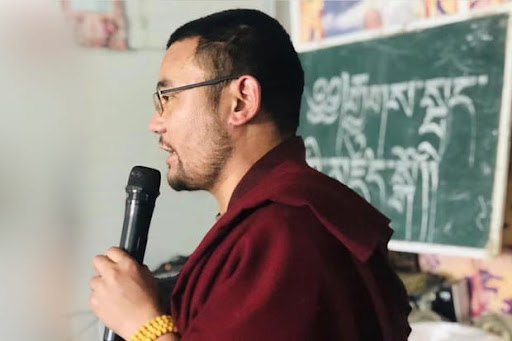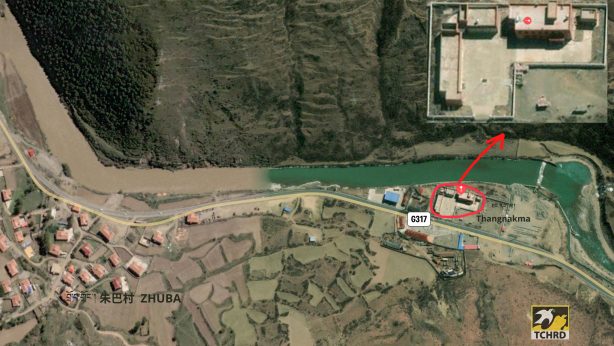Tibetans Protest in Kardze during the Tibetan New Year
The Tibetan Centre for Human Rights and Democracy (TCHRD) received a confirmed information from reliable sources that local Tibetans in Kardze County refused to celebrate Losar, the Tibetan New Year (February 25-28, 2009) despite exhortation by the local Chinese authorities. The refusal to celebrate the Tibetan New Year was observed in the memory of those Tibetans died in the largest Pan Tibet protests in 2008.
Sources told TCHRD that about 20 days prior to the Tibetan New Year, which fell on 25 February 2009, Tibetans in Kardze County held meritorious religious prayers such as reciting Mani and Tara mantras as a gesture of sincere grief and mourning for those Tibetans who gave up their lives for human rights, freedom and justice in Tibet. In most parts of Tibet, the Tibetan New Year was not celebrated in the customary fashion. The meritorious prayers and rituals were intended to help and guide the deceased Tibetans for their safe and happy passage into their future re-births in accordance with the Tibetan Buddhist beliefs.
However, just few days before the Tibetan New Year, the Chinese government officials visited villages, townships, monasteries and nunneries to extort the local Tibetans to celebrate the Tibetan New Year in grand style. The Chinese officials even lured monks and nuns to celebrate “usual Losar” (Tibetan New Year) with monetary rewards. However, none of monks and nuns celebrated the Tibetan New Year.
According to the traditional Tibetan custom, on the third day of the Tibetan New Year, the local Tibetans in all parts of Kardze Prefecture used to celebrate the Tibetan New Year with various festivities, amusements and sports such as Horse racing competition, dances, revelries, incense burning rituals and hoisting flags on mountain tops to please the local deities. However, during this New Year, none of such traditional festivities and celebrations were observed by the Tibetans, something unheard and unprecedented in Kardze region.
In a sheer mockery, the Chinese government directed the retired government officials and cadres to perform “songs and dances” during the Tibetan New Year day. However, not a single Tibetan spectator turned to watch the “songs and dance” at Kardze County Headquarter staged by the higher Chinese authorities. In embarrassment, the County officials later brought the “singers and dancers” to Townships for performance and entertainment. However, once again not a single spectator came out to watch the performance at Kardze Township Headquarter.
On the other hand, for the first time in their cultural history, the local Tibetans went on with normal routines and works on the first day of the Tibetan New Year. Such display of non-co-operation in this form and manner was unprecedented. Sources told TCHRD that the local Tibetans were constructing houses and performing household works on the New Year day.
As a mark of a strong defiance and resistance against the Chinese government, on 28 February 2009, (fourth day of the Tibetan New Year) a huge banned Tibetan National flag was seen being hung on the wall of a police station in Lhoba Township, Kardze County, Kardze Prefecture, Sichuan Province. In addition, a huge graffiti in red paint carrying a slogan, “Independence for Tibet” was written just below the hung Tibetan National flag.
Despite the intense repression, Tibetans still managed to hold protests in Kardze County in what has been seen as continuous cases of dissidence and pro-independence movements inside Tibet. On 1 March 2009, Kardze County witnessed three protest demonstrations in a single day. The protest demonstrations called for “Independence for Tibet”. The first protest took place at 10 am in the morning at Su-ngo Township Headquarter, Kardze County, Sichaun Province. It was led by two nuns, Pema Yangtso and another nun whose identity still remains yet to be ascertained. The two nuns were from Shi-lus Hermitage Nunnery, which was located three kilometers away from Kardze County Headquarter.
Few hours after the first protest, it was followed by another protest at 1 pm in afternoon at Kardze County Headquarter. This time it was led by two students and a monk. They were identified as Rinchen Phuntsok, age 15, Tsering Drakpa, age 17 and third was a monk named Achoe, age 22. The two teenage students were Chinese language student at the Chinese Middle School in Kardze County. According to the Chinese Constitution, juvenile below the age of 18 are not entitled to be arrested and placed under custodial detention. However, when it comes to the actual implementation, these laws are often violated and ignored by the Chinese authorities.
Sources told TCHRD that the third protest of the day was carried out by a girl whose identity still remained unknown. There was also an unconfirmed report of a man who staged a solo protest in Kardze County on 6 March 2009.
TCHRD learned that the three protest demonstrations lasted no more than few minutes. They were immediately arrested by the Chinese security forces. They were currently known to be held in detention centres. This elucidates that there is an intense restriction, vigilance and repression in the most parts of Tibet. The security forces are scattered everywhere, so much so that the protesters are arrested within the few minutes of the demonstration. The situation in Kardze Prefecture has been tense and volatile for some time now.
The situation in many parts of Tibet still remains volatile and tense. There has been an unprecedented cover of security presence and vigilance as 10 March draws near and which also coincides with the 50 Years of China’s iron clad rule and occupation inside Tibet.
Earlier, a monk named Tapey from Kirti Monastery, in his mid twenties immolated himself on 27 February 2009 at town’s main road. Eyewitnesses reported that he was carrying a picture of the Dalai Lama and was shouting slogans. Reports say he was shot by the Chinese security forces and fell down to ground.
A day before the self-immolation, a thousand of monks gathered at Kirti Monastery to demand the Chinese authorities to allow them to hold the great prayer festival. Meanwhile, a latest report released by Xinhua says that the monk is recovering from the burn injuries. Xinhua’s report on 6 March 2009 denies the initial reports claim by some Tibetans that the monk was shot by the Chinese security police as he immolated himself.


